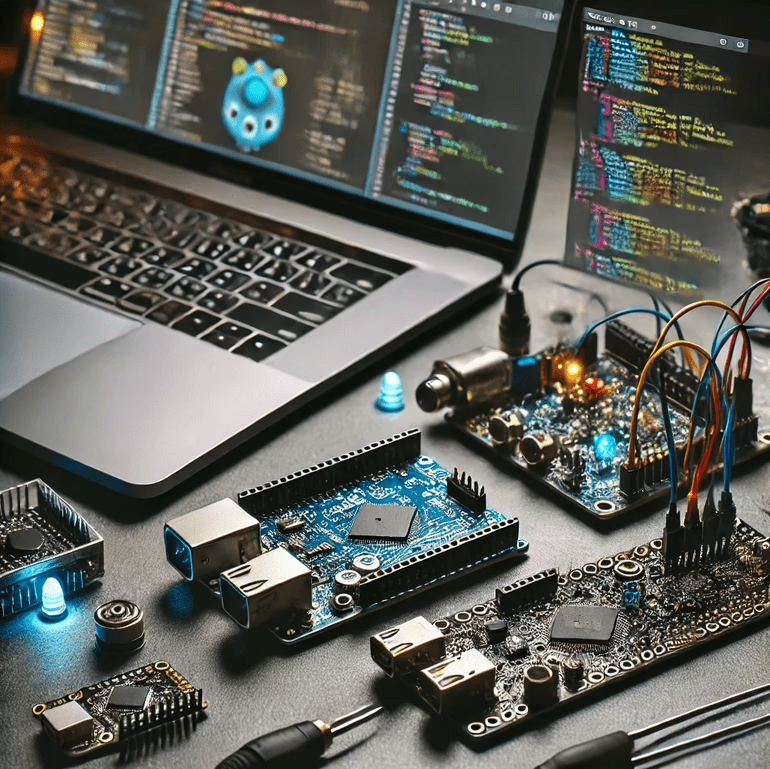In today’s technology landscape, the convergence of software and hardware has opened new horizons for innovation, particularly in the realms of the Internet of Things (IoT) and embedded systems. One of the key enablers of this revolution is MicroPython, a lean and efficient implementation of the Python programming language designed to run on microcontrollers and other resource-constrained environments. By providing a subset of the Python language and a compact runtime, MicroPython makes it possible to bring the simplicity and power of Pythcurateon to the world of embedded devices.
Understanding MicroPython
MicroPython is not just a stripped-down version of Python; it is a powerful tool tailored to the unique challenges and opportunities of embedded systems. Let’s delve into the key aspects that make it a game-changer for developers and businesses alike.
Target Platforms
MicroPython is specifically designed to run on microcontrollers and small embedded systems. These platforms typically have limited memory and processing power, making them challenging environments for conventional software. However, MicroPython’s optimized runtime and efficient memory management allow it to execute Python scripts directly on these devices, making it ideal for IoT projects, robotics, and other embedded applications.
Python Compatibility
One of MicroPython’s strengths is its compatibility with Python 3. While it provides a subset of the Python standard library, it maintains a familiar syntax and core language features. This ensures that developers who are already proficient in Python can quickly adapt, reducing the learning curve and speeding up the development process.
Memory Efficiency
MicroPython’s primary goal is memory efficiency. Microcontrollers often come with constrained resources, such as limited RAM and flash storage. MicroPython’s runtime is meticulously optimized to minimize memory usage, enabling it to function effectively within these tight constraints. This efficiency is crucial for deploying Python code on small devices without compromising performance.
Interactive REPL
MicroPython includes an interactive Read-Eval-Print Loop (REPL), which allows developers to execute Python commands and scripts directly on the microcontroller. This feature is particularly useful for testing and debugging code in real-time, facilitating a more iterative and exploratory development process. The REPL environment makes it easier to experiment with code, interact with hardware, and diagnose issues on the fly.
Hardware Interfacing
Interfacing with hardware components, sensors, and peripherals is a fundamental aspect of embedded systems development. MicroPython provides a rich set of libraries and modules that simplify the interaction with GPIO pins, sensors, displays, and other hardware features. This built-in support for hardware interfacing accelerates the development process and enables the creation of sophisticated embedded applications with ease.
Cross-Platform Support
MicroPython is designed to be versatile and supports a variety of microcontroller platforms. Whether you are working with ARM Cortex-M, ESP8266, ESP32, or other popular microcontrollers, it offers cross-platform compatibility. This flexibility allows developers to choose the hardware that best suits their project requirements, fostering a diverse and adaptable development ecosystem.
Open Source and Community-Driven MicroPython
MicroPython is an open-source project, and its source code is available for inspection, modification, and contribution. This openness encourages a vibrant community of developers to contribute to the project, creating libraries, extensions, and tools that enhance MicroPython’s capabilities. The collaborative nature of the MicroPython community ensures continuous improvement and innovation.
Extensibility with C Modules
For projects that require additional functionality or custom hardware drivers, MicroPython allows developers to write C modules to extend its capabilities. This extensibility enables the integration of specialized features tailored to specific project needs, providing a robust platform for embedded systems development.
Integration with Development Tools
MicroPython integrates seamlessly with popular development tools, such as the editor, Thonny, uPyCraft, and other Integrated Development Environments (IDEs). These tools simplify the development, deployment, and debugging of code on microcontrollers, streamlining the workflow and enhancing productivity.
Educational Use
MicroPython’s simplicity and compatibility with Python syntax make it an excellent choice for educational settings. It is often used to teach programming and embedded systems concepts to beginners. The interactive REPL and user-friendly environment make it accessible for students, hobbyists, and educators, fostering a new generation of developers proficient in both software and hardware.
MicroPython in Action: Real-World Applications
The versatility and power of MicroPython have made it a popular choice for a wide range of applications. Here are some real-world examples where MicroPython is making a significant impact:
IoT Projects
MicroPython is widely used in IoT projects, where devices need to communicate with each other and the cloud. For example, smart home devices, environmental sensors, and wearable technology can all benefit from MicroPython’s lightweight and efficient runtime. By leveraging MicroPython, developers can create IoT solutions that are not only functional but also scalable and maintainable.
Robotics with MicroPython
In the field of robotics, MicroPython provides a simple yet powerful platform for controlling motors, sensors, and other components. Educational robots, DIY robotics kits, and even advanced autonomous systems can be programmed using MicroPython, enabling rapid prototyping and iterative development. The ease of use and quick deployment make MicroPython a preferred choice for both hobbyists and professional roboticists.
Embedded Systems in Industry
MicroPython is also finding its way into industrial applications, where reliability and efficiency are paramount. Industrial automation, monitoring systems, and control units can all benefit from MicroPython’s ability to run on resource-constrained hardware while maintaining robust performance. The open-source nature of MicroPython allows for customization and optimization to meet specific industrial requirements.
Educational Tools
MicroPython’s educational value cannot be overstated. It is an excellent tool for teaching programming, electronics, and embedded systems to students of all ages. From simple projects like blinking LEDs to complex tasks like building a weather station, MicroPython provides a hands-on learning experience that bridges the gap between software and hardware.
Curate Consulting Services: Your Partner in MicroPython Development
At Curate Consulting Services, we understand the transformative potential of MicroPython for businesses across various industries. Our team of experts is dedicated to helping you harness the power of MicroPython to achieve your project goals. Whether you are developing IoT solutions, building robotic systems, or implementing industrial automation, we provide the specialized talent and consulting services you need to succeed.
Finding Specialized Talent for MicroPython
Finding the right talent for your MicroPython projects can be challenging. At Curate Consulting Services, we specialize in identifying and recruiting top-tier professionals with expertise in MicroPython and embedded systems. Our extensive network of skilled developers and engineers ensures that you have access to the best talent for your specific needs.
Customized Solutions
We recognize that every project is unique, and a one-size-fits-all approach doesn’t work. Our consulting services are tailored to your requirements, providing customized solutions that address your specific challenges and objectives. From initial concept development to deployment and maintenance, we support you at every stage of your MicroPython project.
Training and Support for MicroPython
To maximize the potential, it’s essential to have a team that is well-versed in its intricacies. We offer comprehensive training programs to equip your team with the knowledge and skills needed to effectively use MicroPython. Additionally, our ongoing support ensures that you have the assistance you need to overcome any obstacles and achieve your project milestones.
Innovation and Development
Innovation is at the heart of what we do. Our team of experts stays at the forefront of technology trends, continuously exploring new ways to leverage MicroPython for innovative solutions. Whether you are looking to develop cutting-edge IoT devices, enhance your robotics capabilities, or implement advanced industrial systems, we provide the expertise and insights to drive your project forward.
Conclusion
MicroPython is revolutionizing the way we approach embedded systems development, offering a powerful and efficient platform for IoT, robotics, and beyond. Its compatibility with Python, memory efficiency, and robust hardware interfacing capabilities make it an ideal choice for a wide range of applications. At Curate Consulting Services, we are committed to helping you unlock the full potential of MicroPython, providing specialized talent, customized solutions, and unparalleled support to ensure your success.
Embrace the future of embedded systems with MicroPython and Curate Consulting Services. Together, we can turn your vision into reality, one project at a time.

